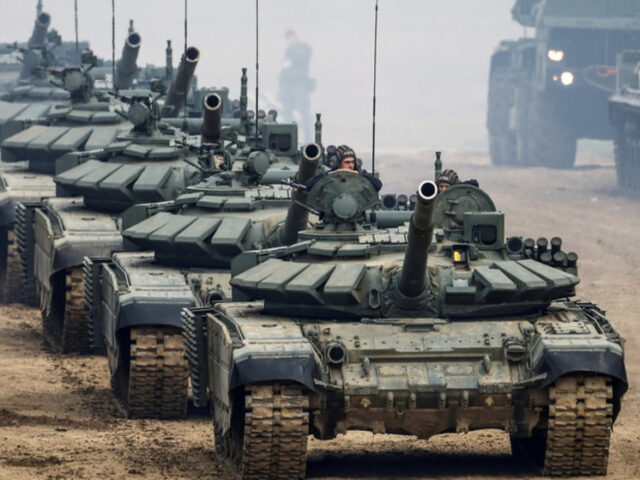
Russia’s Military-Industrial Complex Struggles With High Employee Turnover
Publication: Eurasia Daily Monitor Volume: 21 Issue: 5
By:

At the end of last year, it was becoming increasingly apparent that Russian industry was struggling with flagging production rates and a shortage of technical personnel (see EDM, September 21, October 31, December 4, 2023). The most recent update of Russia’s industrial statistics for the beginning of 2024 provides a better understanding of the fundamental limitations preventing real increases in the country’s arms production. These realities cast doubt on the bravado of high-ranking Russian officials who continue to claim a significant and sustainable increase in production rates (Rosstat.gov.ru, December 29, 2023; Minpromtorg.gov.ru, December 25, 2023). Decreasing human capital has become one of the most crucial limiting factors for Moscow’s military-industrial complex—one that is growing due to heavy Russian losses in Ukraine (Ukrinform, January 16). In 2023, much analysis focused on discussing the growing deficit of workers in Russia’s industrial sector, with a special focus on arms manufacturing. The problem, however, appears to be much deeper than previously thought and hardly manageable for the Kremlin and state-owned corporations in the near term.
On the surface, the recent industrial statistics demonstrate a slight growth in employment in some key industries related to arms manufacturing. Although, the table below does indicate a shortage of workers in several technical industries:
Number of Employees in Thousands in Russian Industries Related to Arms Manufacturing, 2017–2022
| 2017 | 2018 | 2019 | 2020 | 2021 | 2022 | |
| Main Chemical Products, Fertilizers, Plastics, etc. | 215 | 215.7 | 222.2 | 221.6 | 224.1 | 225.1 |
| Other Fabricated Metal Products | 281.5 | 255.2 | 244.4 | 242.3 | 233.8 | 235.7 |
| Computers/Electronic and Optical Devices | 379.7 | 353.1 | 350.7 | 345.5 | 350.4 | 352 |
| Aircraft, Spacecraft, and Related Equipment | 287.7 | 275.1 | 270.8 | 267.5 | 264.2 | 264.9 |
| Other Transportation | 139.8 | 121.1 | 124.4 | 130.2 | 136 | 137.4 |
| Machine Tools | 5.1 | 8.1 | 7.8 | 7.8 | 7.2 | 7.1 |
| Total | 1,308.8 | 1,228.3 | 1,220.3 | 1,214.9 | 1,215.7 | 1,222.2 |
Steady growth in employment was demonstrated only in the chemical industry, now standing closer to 2010 and 2011 levels, at 239,000 and 230,000, respectively (Rosstat.gov.ru, accessed January 11, 2024). The category “Other Transportation” demonstrated a slight recovery in 2019–22 after significantly dropping in 2018. Personnel working on manufacturing computers and electronics also grew modestly in 2021 and 2022, as did the aerospace industry and workers in the “Other Fabricated Metal Products” for 2022. It remains unclear whether this recovery became a sustainable trend in 2023.
Overall, Russia’s industrial data does not provide specific numbers for employment categories, such as factory workers, engineers, and administrative and support personnel. From the statistics provided, the number of Russians who work to produce arms and other systems for the military may have increased more significantly than the general data shows. Even so, this would have required a concerted government effort, and there is little evidence that Russia’s arms manufacturers engaged in mass layoffs of “white collar” workers together with the mass recruitment of new factory workers and engineers. These numbers also mean that the moderate increase in arms production rates for 2022 and 2023 following the modest increase in employment is related more to a bounce back from the decline in employment and production rates that took place after 2017 than any sustainable growth.
Russia’s machine tool industry demonstrates a crucial exception. It faces a decrease in employment but a paradoxical increase in productivity (Rosstat.gov.ru, accessed January 11, 2024). According to official numbers, machine tools manufacturing has apparently grown consistently since 2018:
Machine Tool Manufacturing in Russia in Total Number of Units, 2017–2022 and January–November 2023
| Year | Total Units |
| 2017 | 4,495 |
| 2018 | 4,188 |
| 2019 | 4,224 |
| 2020 | 4,529 |
| 2021 | 5,458 |
| 2022 | 7,221 |
| January–November 2023 | 7,734 |
The paradox is partly explained by Moscow’s continued dependence on imported machine tools and components for arms production. In this regard, the increase in current production rates is derived from the increased use of imported components rather than from a growing workforce. The increased production rates of machine tools also coincide with the decreasing average cost of producing a machine tool unit (Rosstat.gov.ru, accessed January 11, 2024). Russia now relies on cheaper, less-advanced imported components to circumvent Western sanctions rather than using the expensive advanced components from foreign corporations. The experience of Russia’s machine tool industry demonstrates that, under the current circumstances, one of Moscow’s only strategies to compensate for a lack of technical personnel is expanding the purchase of alternative imports.
Meanwhile, the decreasing number of employees in the machine tool industry will hurt the Kremlin’s plans for future defense production. The growing shortage of workers means that the recently announced plan to invest 300 billion rubles ($3–3.5 billion) in machine tool import substitution with additional investments of 200 billion rubles ($2–2.2 billion) from regional budgets and non-budgetary sources during 2024–2030 has become wholly unrealistic. As manpower losses mount in Ukraine. Russian industry will simply not have enough people to fully implement Moscow’s strategy (Kremlin.ru, October 24, 2023; Pnp.ru, November 11, 2023).
Russia’s arms manufacturing industries are still unable to recruit enough employees to fill the slots needed to sustain increased production rates. The Kremlin will likely continue to implement creative efforts in 2024, such as attracting more labor migrants and co-opting prison labor, to ameliorate these problems, though it will struggle to reach 2017 levels in the near term. Moscow’s mounting domestic problems provide a window for Ukraine and its Western allies to re-capture the initiatives on the battlefield. Renewed Western resolve and continued Ukrainian resilience will send a strong message to the Kremlin as the 2024 campaign begins.



